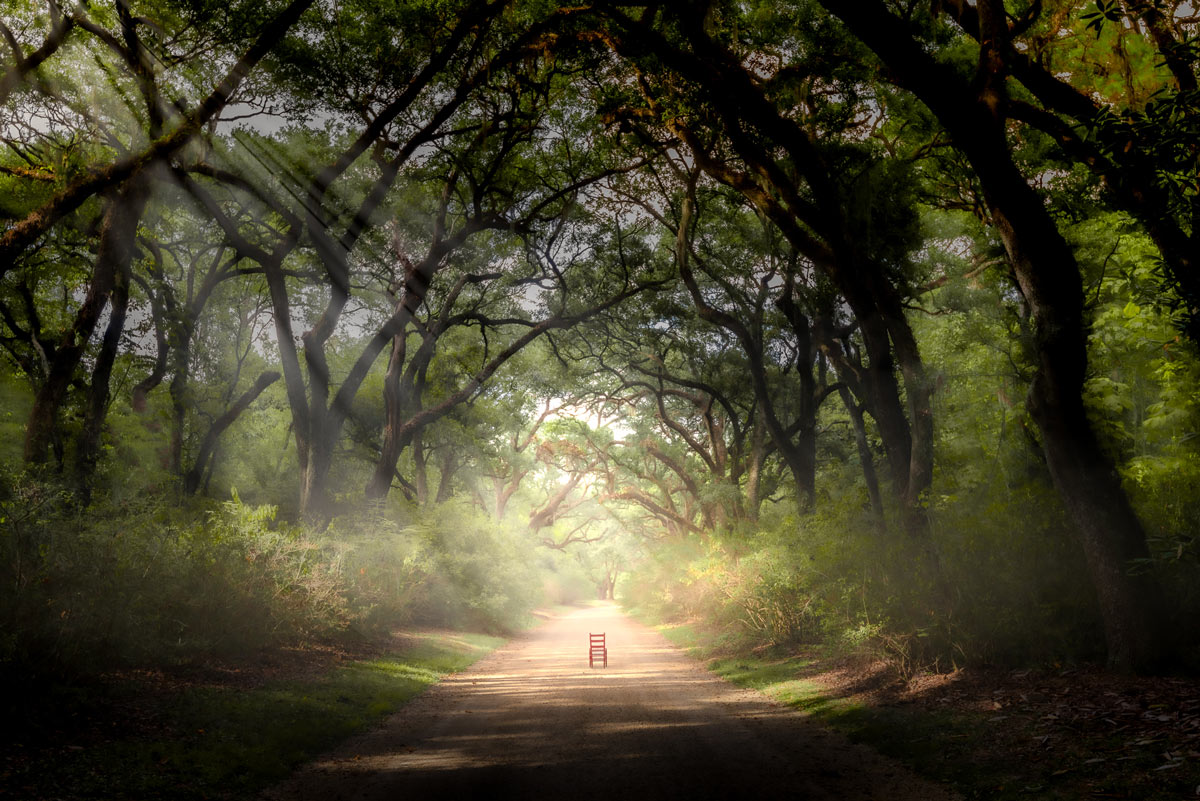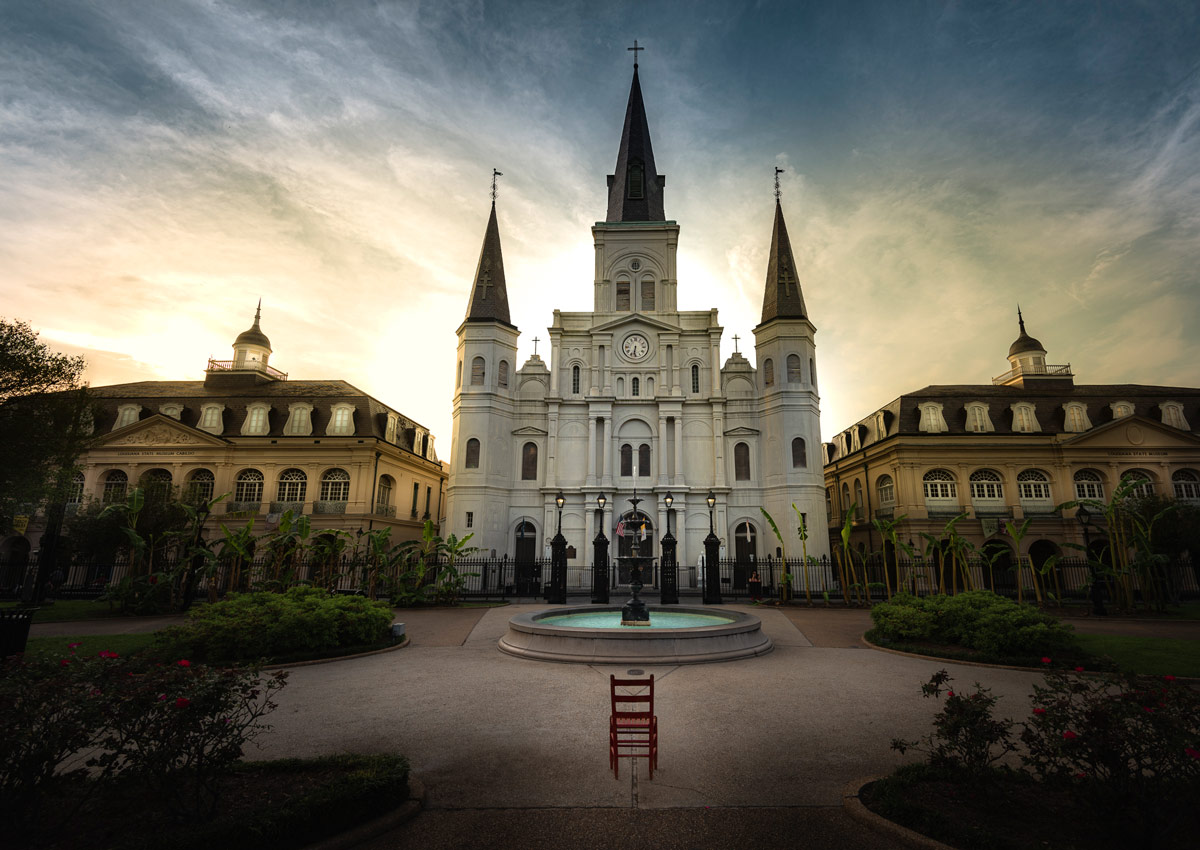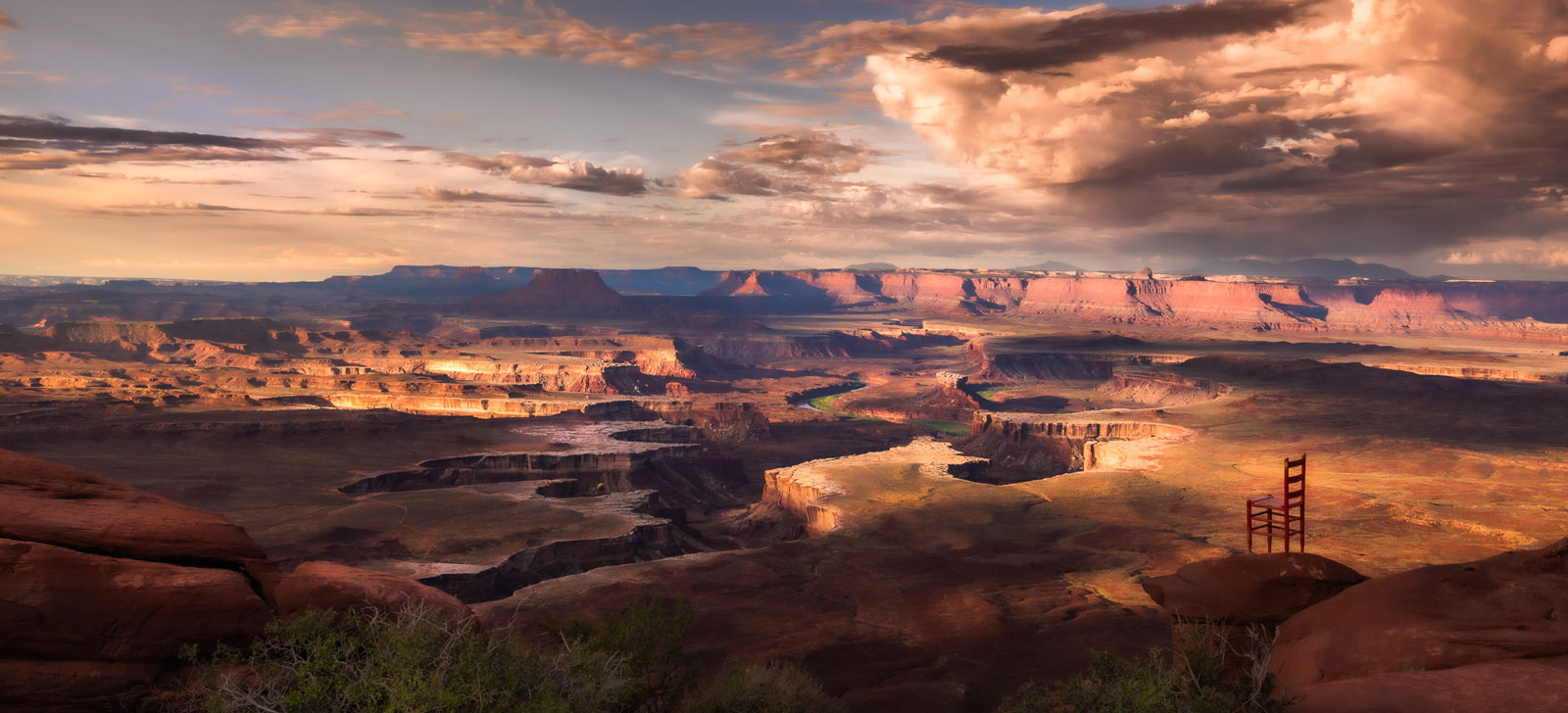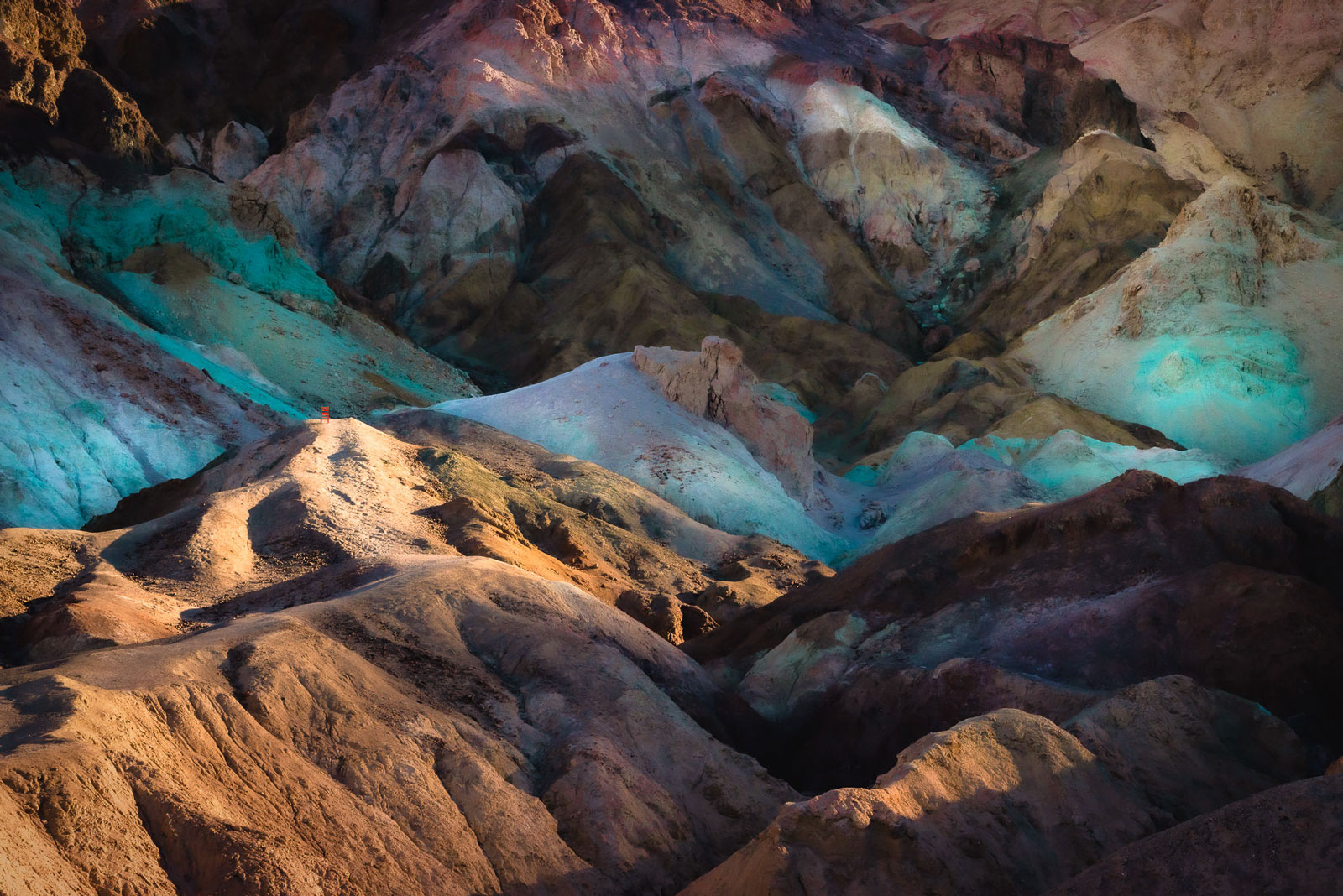These photographs are part of a series called the Red Chair – something I’ve been working on for a while and been thinking about for even longer – how to create a deeper connection between a photograph and the viewer.
The most difficult things to convey in a photograph are almost always scale and intimacy.
Scale is difficult because a two-dimensional representation of a three-dimensional world can fall short in portraying the scale of the scene and more importantly, how big the scene is in relation to a human being.
Intimacy is especially difficult with landscapes because while the scene may be beautiful or captivating, there’s often nothing in the photograph that the viewer can intimately connect with.
Using a simple object, a chair – something we all use – I’m attempting to create that depth of connection that may otherwise not be there. The series is both a portrait and self-portrait, my endeavor to connect myself and others to the places in the world that I feel a connection to. Every photograph tells a story. The red chair is my way of making the story more approachable.
The history of the chair is one of loss and reclamation. It’s a chair that was in my room as a young boy and only came back into my possession decades later after being feared lost in Hurricane Katrina. It sat in five inches of floodwaters for nearly two weeks but because the chair is made of cypress wood, it was able to survive.
Thank you for reading. I hope you enjoy the series.
The South
Churches of the South
The West
61
It’s no secret that a consistent theme in the Red Chair series is the subject’s isolation within the scene. Alongside that motif, the chair is a mechanism of portraiture – of either myself or of an abstract onlooker.
Light and shadow play a strong role in my photography, in both the tangible and figurative sense. I travel aimlessly in the south sometimes (often times) and where I am frequently drawn back to is a single road – Route 61. Known pejoratively as Airline Highway in Louisiana and affectionately as the Blues Highway in Mississippi, no other road I’ve traveled encapsulates the divergence between people and places either cherished or consigned to oblivion.
61 will be a series of photographs from either the highway itself or in an adjacent town that showcases those differences and how they interact with each other. Remnants of the past remain in plain view amongst the towering refineries and sprawling subdivisions of today. But examined as one encompassing whole, you can clearly see a compelling story of the historical passage of time. These photographs will attempt to tell part of that story.







































